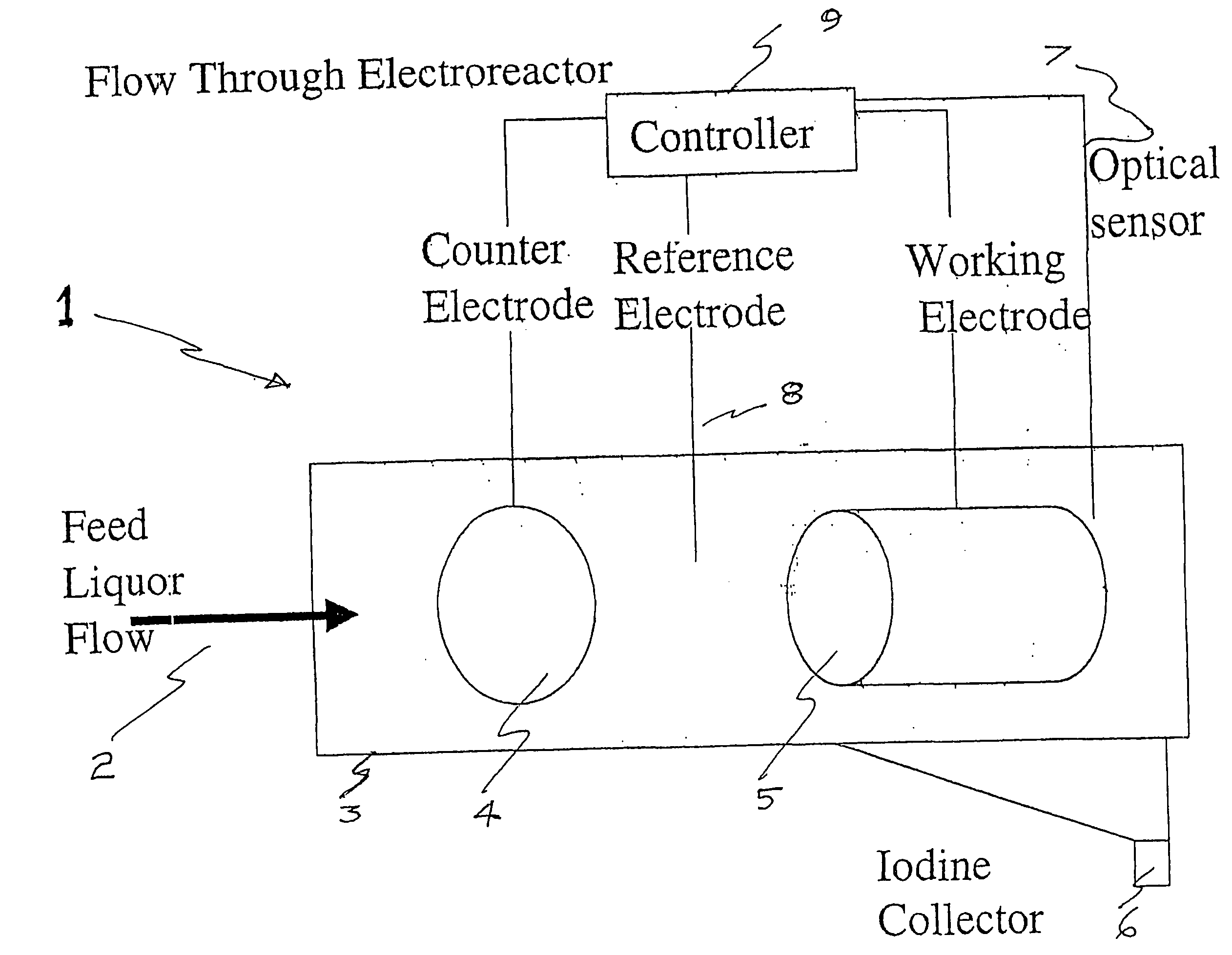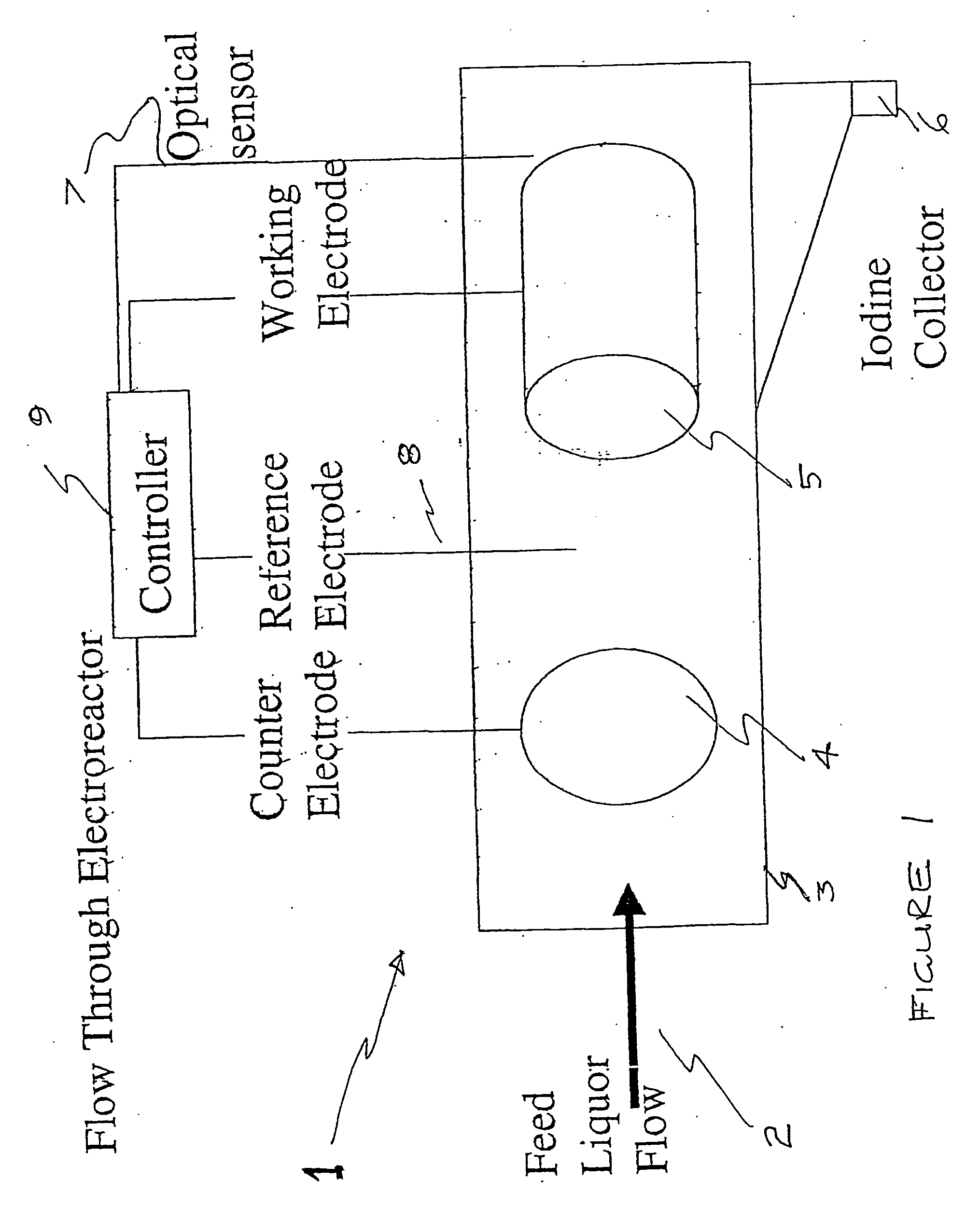Process and method for recovery of halogens
a technology of halogen recovery and process, which is applied in the field of process and method for recovering halogens, can solve the problems of inefficient application of iodine produced by prior art methods, limited disinfection application types in which iodine has been used, and inability to teach economic methods for recovering iodine, etc., and achieves the effect of convenient use and rapid dissolution in flow streams
- Summary
- Abstract
- Description
- Claims
- Application Information
AI Technical Summary
Benefits of technology
Problems solved by technology
Method used
Image
Examples
example 1
[0119] The electrowinning potential for a 100 mg / ml iodide solution on a stainless steel electrode is determined by carrying out a cyclic voltammetry run of the electrode in the solution. To do this the potential is scanned from zero volts to 2 volts at 100 mV / s while the current is measured. The cyclic voltammogram obtained appears as in FIG. 3. The trace shows a characteristic wave in current. At the top of this wave the electrowinning process is taking place. The optimal potential is chosen from this trace as the lowest potential at which the current is at or close to its maximum. In this case 1.5 V.
example 2
[0120] The following example illustrates a method of obtaining electro-deposited iodine (EDI). Electro winning of iodine is accomplished using a three-electrode system. A stainless steel working (Grade 18 / 8) electrode comprises 3 separated 40 mm discs mounted on a spindle. The reference electrode is a commercial Ag / Ag+ electrode and the counter electrode is a stainless steel disc. The electrolysis cell consists of a 120 ml glass vessel with porosity 5 sinter in the base. A solution of 100 ml of 100 mgml−1 potassium iodide in 0.1M H2SO4 is added to the electrolysis cell. A Teflon coated magnetic stirrer bead is used to stir this solution. The electrolysis cell is then placed in a large dish containing about 1 litre of 0.1M H2SO4. The anode electrode and reference electrode are then immersed in the acidic potassium iodide solution and the counter electrode placed in the outer container of dilute sulphuric acid. The electrodes are connected to a potentiostat and the voltage set to +1.5...
example 3
[0121] The same procedure is used as in Example 2 except that the glass frit used to separator is replaced with a Nafion membrane.
PUM
| Property | Measurement | Unit |
|---|---|---|
| electric potential | aaaaa | aaaaa |
| density | aaaaa | aaaaa |
| particle sizes | aaaaa | aaaaa |
Abstract
Description
Claims
Application Information
 Login to View More
Login to View More - R&D
- Intellectual Property
- Life Sciences
- Materials
- Tech Scout
- Unparalleled Data Quality
- Higher Quality Content
- 60% Fewer Hallucinations
Browse by: Latest US Patents, China's latest patents, Technical Efficacy Thesaurus, Application Domain, Technology Topic, Popular Technical Reports.
© 2025 PatSnap. All rights reserved.Legal|Privacy policy|Modern Slavery Act Transparency Statement|Sitemap|About US| Contact US: help@patsnap.com



